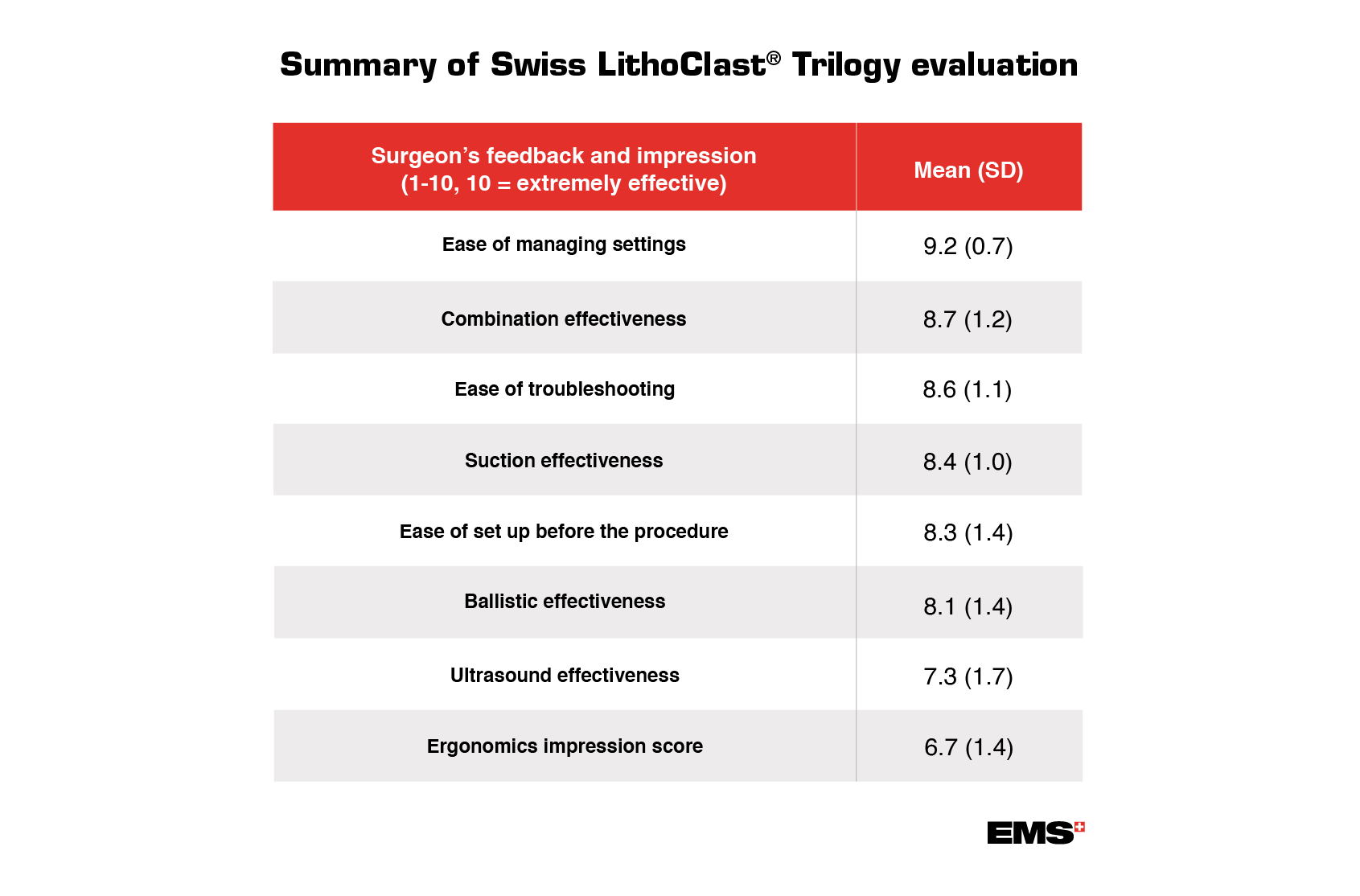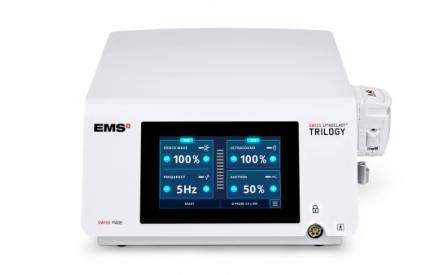Initial Clinical Experience with Swiss LithoClast® Trilogy during Percutaneous Nephrolithotomy
Nottingham C. U. et al. Journal of Endourology, vol. 34,2 (2020): 151-155.
Study background
Percutaneous nephrolithotomy (PCNL) is a gold standard treatment in patients with renal stones >20 mm in diameter. Several in vitro and laboratory model studies provided robust evidence on Swiss LithoClast® Trilogy efficiency. This modern, single-probe device delivers both ultrasonic energy and electromagnetic ballistic impact with a simultaneous suction capability.
Study objective
The main goal of this study was to evaluate the initial experience with the Swiss LithoClast® Trilogy during PCNL.
Materials and methods
- Multi-institutional in vivo study on 43 patients scheduled for PCNL and treated with Swiss LithoClast® Trilogy;
- The stone surface area was determined with 2D axial imaging and presented as mm2;
- Investigators registered stone clearance time, stone clearance rate, stone-free rate, all device malfunction and complications;
- Each surgeon subjectively evaluated the following parameters on a 1-10 scale: ergonomics, the effectiveness of ultrasound, ballistic, suction and ultrasound and ballistic as a combination, ease of setting up prior to the procedure, troubleshooting, settings management;
- After performing the PCNL with Swiss LithoClast® Trilogy, surgeons compared Trilogy to their usually used lithotrite on a 1-5 scale;
Results
Swiss LithoClast® Trilogy has an excellent safety and durability profile and is perceived by surgeons as highly satisfactory!
The mean stone surface area and stone density were 345mm2 and 780 HU, respectively. Calculation showed that the stone surface clearance rate for Swiss LithoClast® Trilogy was 68.9 mm2/min. The stone-free rate was 67.6%, as assessed in the postoperative imaging available for review. Overall impression of Swiss LithoClast® Trilogy in comparison to previously used default lithotripter was 3.6 (SD 1.0) (scale: 1 = much worse, 2 = slightly worse, 3 = the same, 4 = slightly better, 5 = much better).

During the entire study, two cases (4.6%) of device malfunctions occurred. None required transition to another lithotrite. The first one was the breakage of a Ø1.5mm probe during mini-PCNL, which resulted in switching to standard PCNL. The second one was clogging of the suction tubing, this problem was solved by the surgical team. In total, there were 4 (9.3%) registered complications: renal pelvis perforation, the need for blood transfusion, pneumothorax requiring chest tube placement and renal artery pseudoaneurysm.
Conclusion
The most notable finding of this study is the exceptional stone clearance rate of 68.9 mm2/min achieved by Swiss LithoClast®. This multi-center study from the USA evaluated this efficient lithotrite as highly satisfactory, with an excellent safety and durability profile.

